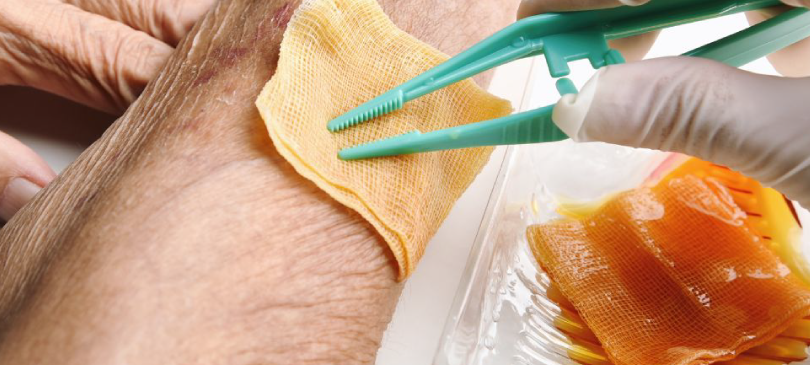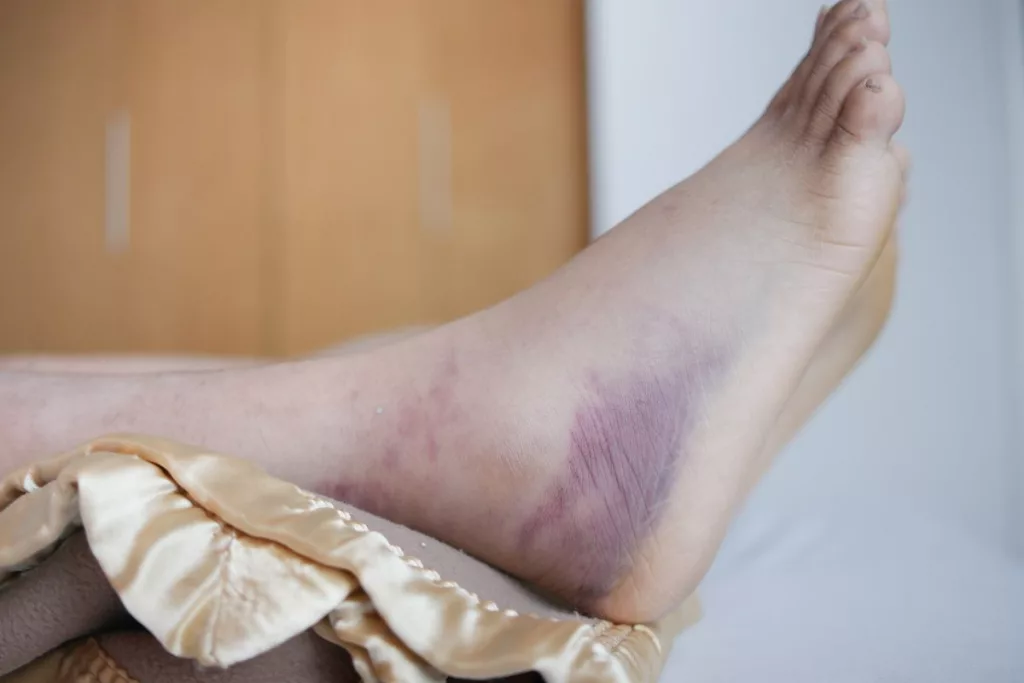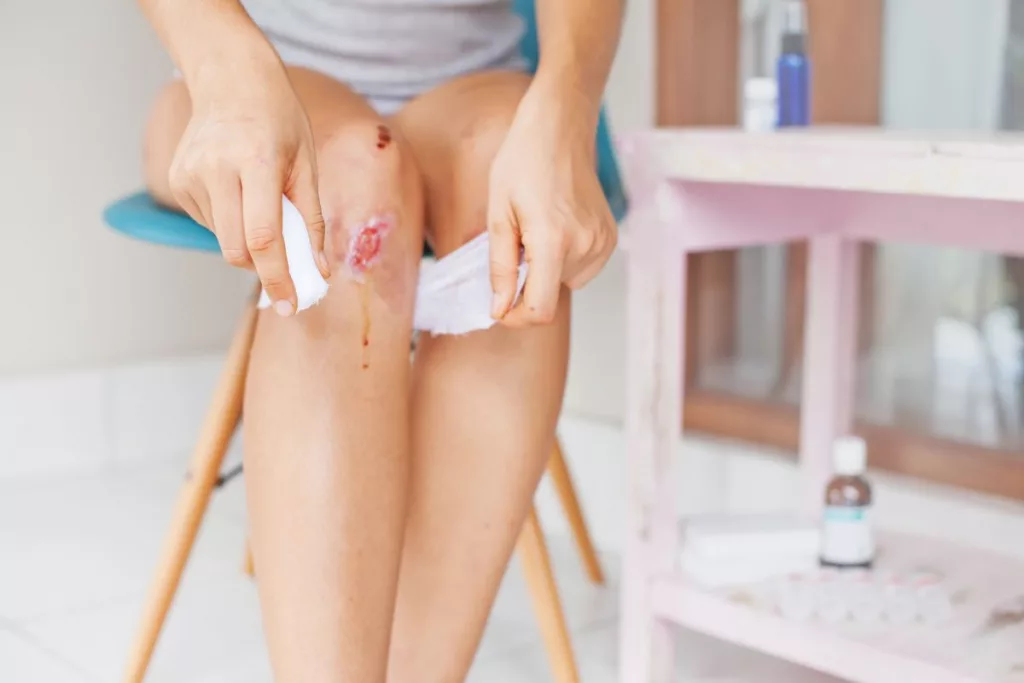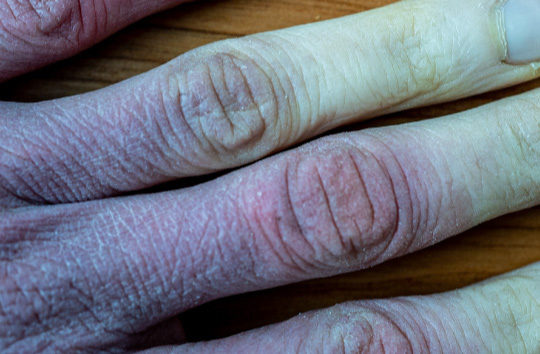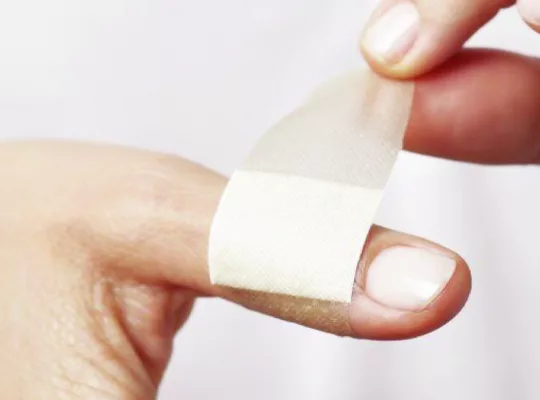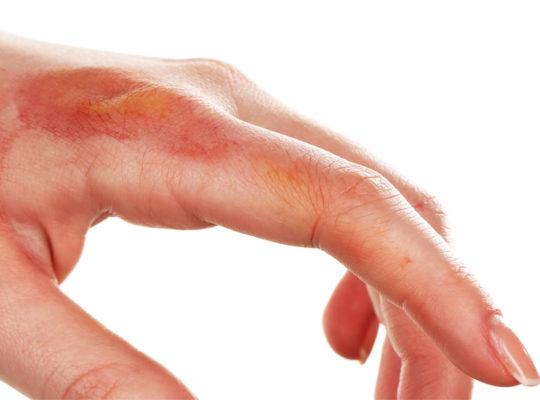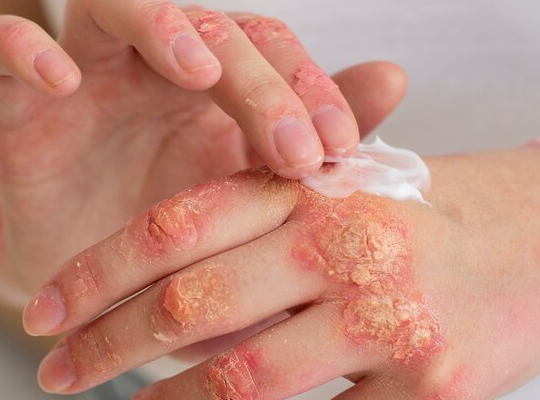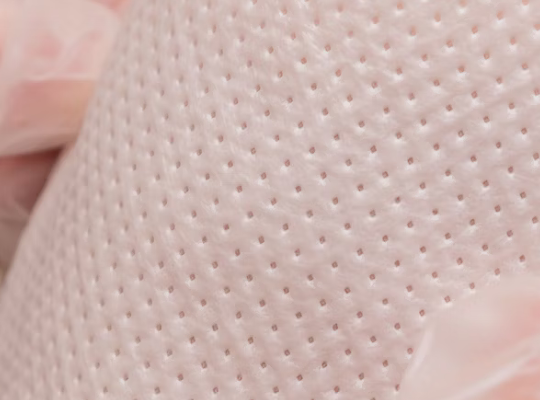The skin is the first line of defense the human body has. When the skin is broken, this is known as a wound. While deep wounds carry the apparent risk of blood loss, wounds of any depth or type come with a risk of infection.
Some groups of people are more at risk for developing wound infections (for example, people with underlying health issues, especially concerning circulation).
These groups account for most of the chronic wound patients, amounting to 6.5 million, in the United States.
With that being said, everyone, regardless of health status, should understand the factors that contribute to wound infection.
It is also important to understand the diagnostic process and treatment options for infected wounds, as well as how to lower the risk of infection.
Read on to find out how wound infections occur, what the risk factors are, and how to recognize that a wound has become infected.
We’ll also be talking about when to seek treatment (including specialist treatment), how diagnosis works, and what treatment entails. Finally, we will be explaining how to prevent wound infection moving forward.
How Does Wound Infection Occur?
Wound infection can begin in a variety of ways. Sometimes, a surgical procedure resulting in significant tissue trauma can be the catalyst for an infected wound.
However, while infection following surgery is certainly possible, it is rarer than other causes of wound infection because surgery is typically conducted in a sterile environment.
It’s essential to be aware that wound infection can start with something as simple as a small cut or a seemingly harmless animal bite.
Wounds become infected when either bacteria or fungi enter the wound, and this can happen through stepping on something sharp that hasn’t been cleaned, or handling unsanitary items with an open wound.
The main bacteria responsible for causing wound infection are Streptococcus and Staphylococcus. MRSA, Cellulitis, and Clostridium can also be responsible.
Fungi are also major causes of wound infection. Yeast and mold should not be allowed to penetrate open wounds. Aspergillus, Cladosporium, and Candida are just a few examples of fungi that can lead to infected wounds.
Risk Factors For Wound Infection
Certain people have a higher risk of developing wound infections than others. Chronic health conditions make wounds more likely to get infected.
While this is a blanket statement, medical professionals generally advise anyone who requires regular doctor’s appointments to be extra vigilant regarding any developments and changes in the condition of a wound.
Conditions that significantly elevate the risk of wound infection include:
- Obesity
- Poor circulation
- Diabetes
- Limited mobility (for any reason)
- Compromised immunity
- Malnutrition/deficiencies
Poor hygiene is also a major contributor to wound infection rates. Health conditions or injuries that limit a person’s mobility can make proper wound care and general hygiene difficult, resulting in higher risks of infection.
Signs that A Wound Is Infected
Generally speaking, any kind of wound (whether it’s shallow or deep) should heal within a period of 2 weeks. Anything over 4 weeks is referred to as delayed healing, and this usually indicates an intervening factor.
It’s important to note that infection is not the only intervening factor that might prevent a wound from healing in the space of 2 weeks.
Poor circulation can be responsible for delayed healing, as can vitamin or mineral deficiencies resulting from poor diet.
A lack of inflammatory response due to a compromised immune system can also contribute to slow healing. However, bear in mind that all of these factors are also risk factors for infection.
Aside from a reluctance to heal, wounds usually present with additional symptoms that indicate an infection:
Pain
Pain is normal at the onset of a wound, especially when the wound is deep. A cut to the skin or a puncture wound is likely to be painful at the beginning of the healing process.
However, as the wound heals, the pain should usually reduce.
If a wound is not becoming less painful after several days, or seems to be getting more painful, this is a sign that infection may be present.
Swelling
Part of the body’s healing response after a wound involves an inflammatory response. This means that the site of a wound may swell slightly as the body sends a supply of oxygenated blood to the site of the wound.
However, after a period of 5 days, swelling (especially if it continues to increase) indicates a problem with the healing process, which could be due to infection.
Warmth
Warmth at or around the site of the wound can also be a normal result of the body’s attempts to heal itself. Unfortunately, it can also be a sign of infection.
Slight warmth around the wound for a few days after the injury is not usually anything to be concerned about. However, if the wound feels increasingly hot to the touch, infection is likely.
Redness
Similar to swelling and warmth, redness can be a normal side effect of a wound. After a 5-day period, however, redness around the wound can be a cause for concern.
This is especially true if the red area is becoming darker or spreading away from the site of the wound.
Red streaks leading away from the wound are an indication of sepsis, which is a serious and life-threatening infection.
Discharge
Some discharge or drainage from a wound can be considered normal and non-threatening. As long as the discharge is clear and thin, it is classified as serum, which is a fluid produced at the site of wounds to promote healing.
With that being said, thick or discolored fluid seeping from a wound, especially in large quantities or accompanied by a pungent odor, is a sign that the wound has become infected.
Note: The above symptoms of wound infection do not have to co-occur in order to signify an infection. Any of these symptoms on their own can be enough to diagnose an infected wound.
It’s also important to bear in mind that a wound can be infected without any of these symptoms being present. This usually happens due to taking steroidal medications or undergoing chemotherapy.
Diabetic neuropathy can also contribute to missed symptoms because it causes numbness in the limbs and extremities, meaning that pain responses (and, in some cases, the wound itself) can go undetected.
Wound Infection Diagnostic Process
In most cases, an infected wound will be diagnosed by a wound care specialist at a Wound Care Center.
While you can visit an emergency department or make an appointment with your GP, specialists at Wound Care Centers have access to the latest diagnostic tools, including tests, as well as more advanced treatment options.
When you visit a Wound Care Center, the specialist will usually conduct a physical examination of the wound and take a look at your medical history.
It’s important to look at a patient’s medical history alongside the wound to determine the likelihood of infection based on aggravating factors, as well as the best treatment options.
Ideally, an examination should take place as soon as possible because catching an infected wound in the early stages lowers the likelihood of further complications.
With that being said, the specialist listening carefully to the patient’s recollection of events is also a key part of the diagnostic process.
The specialist should allow the patient to explain how the wound occurred, what symptoms they are experiencing, any medications (including over-the-counter medications) taken since the injury, and any other relevant information.
Treatment for Infected Wounds
Once wound infection is confirmed, the first step in the treatment process is debridement.
Debridement is a procedure that involves cleaning the wound and carefully removing any debris that might be lodged inside the wound, as well as any infected or dead tissue.
Debridement essentially helps to remove all factors that contribute to the infection. After debridement, the cells surrounding the wound will be able to send cytokines to the wound itself, speeding up the healing process.
In some cases, especially where underlying conditions are present, other treatment options may need to be implemented.
For example, people with poor circulation and low oxygen supply due to nutritional deficiencies or diabetes might need intravenous antibiotics, oxygen therapy, hydrotherapy, or topical prescriptions.
If you have minor infection such as a wart, it can be treated using wart removers and other OTC medicines.
When To Seek Care For An Infected Wound
If you have a wound that is displaying any of the symptoms discussed earlier in this article, you should seek specialist care as soon as possible.
If a wound is painful, swollen, and red during the first 5 days, this is not necessarily something to be worried about.
However, after this point, increased redness, continuing pain, or swelling that won’t go away should be treated as signs of infection.
Additionally, if a wound has not healed after 2 weeks, it’s always best to seek treatment as a precautionary measure, especially if you are suffering from any conditions associated with delayed healing.
Seeking treatment earlier rather than later leads to better chances of success when it comes to treatment. Delaying wound care for an infected wound can lead to complications and life-threatening situations.
Wound Infection Prevention
While treatment options for infected wounds are becoming more advanced all the time, it’s always best to prevent a wound from becoming infected in the first place.
It’s important to understand that there is no single way to guarantee a wound will not become infected.
A large factor in the likelihood of a wound healing is genetics. Some people are simply genetically predisposed to complications during wound healing, and this can’t be outweighed entirely by external factors.
However, by taking proper precautions, it’s possible to reduce the possibility of infection.
Hygiene
The first and most important measure to take in order to prevent wound infection is hygiene.
As soon as a wound occurs, it should be cleaned quickly and thoroughly. If there is any debris in the wound that can’t be removed at home, medical attention should be sought for in-depth cleaning.
Applying an antibiotic-free wound gel can also speed up the healing process by keeping the area moist, meaning that infection is less likely.
It is essential to practice basic hygiene measures such as washing hands frequently and keeping the skin surrounding the wound clean, as well as ensuring that the wound itself is free from bacteria and debris.
This will reduce the risk of contamination.
Covering the Wound
Once it has been cleaned, the wound should be covered using either a bandage or a band-aid. The appropriate covering for a wound will depend on the wound type.
For example, there are different guidelines for covering burns compared to cuts and scratches.
Hydration
Applying an antibiotic-free gel to the site of the wound is a good way to keep the skin moist and hydrated. However, you should also drink plenty of water while a wound is healing to ensure hydration at a cellular level.
The reason hydration is such an important part of the healing process is that macrophages need to stretch in order to reconnect the wound and allow it to heal.
If the skin is dried out, this is much more difficult.
Careful Monitoring
Monitoring the progress of a wound while it’s healing is very important. If you don’t monitor the wound, you can easily miss the signs of infection.
Regularly cleaning and re-dressing the wound provides opportunities to check on its progress. If you notice any of the symptoms of infection, including healing that takes longer than 2 weeks.
Final Thoughts
Wound infection presents a major risk to patients, which is why knowing how to prevent a wound from getting infected and being aware of the signs and symptoms of wound infection is imperative.
Circulatory conditions, diabetes, obesity, malnutrition, and low immunity all elevate the risk of a wound becoming infected.
Wound patients experiencing pain, swelling, redness, warmth, or discharge from a wound should seek medical advice.
This is especially crucial if any of the symptoms are not improving after a 5-day period or if discharge from a wound is thick, discolored, or pungent.
Any of these symptoms accompanied by a fever or red streaks moving away from the wound should be treated as a medical emergency, and any wound that has not healed within 2 weeks should be examined.
Treatment options for infected wounds include debridement, intravenous antibiotics, localized hydrotherapy, and topical treatments.
Frequently Asked Questions
A fever above 100.4 degrees is a sign of advanced wound infection. If you have a wound and your temperature is equal to or higher than this, you should seek urgent medical attention.
Allowing an infected wound to go untreated can have serious and potentially life-threatening consequences. This is why it’s so important to monitor a wound during the healing process for any symptoms of infection.
An infected wound that is not treated can lead to cellulitis, which is when the infection spreads into the deeper tissue. The infection can then be carried through your bloodstream and spread to other parts of your body.
Bacterial infections that reach the bloodstream and start to spread are known as sepsis, and this can be fatal.
Sepsis can result from an infected wound that has been left untreated for too long. It is a serious complication of cellulitis. Knowing the symptoms of sepsis could save your life.
The symptoms include cold and clammy skin, racing heart, rapid breathing or breathlessness, loss of consciousness, fever (or low temperature), confusion and disorientation, and slurred speech.
Bear in mind that you might not experience all of these symptoms. Symptoms of infection in a wound accompanied by any of the symptoms of sepsis is reason to seek emergency medical care.
It is best to cover a wound while ensuring it stays moist during the healing process.
Not only does covering a wound help to stop harmful bacteria and fungi from causing infection, but some studies have suggested that blood vessel regeneration is faster and that inflammation resolves more quickly in a covered, moist environment.
In short, covering a wound and ensuring the skin stays hydrated will expedite healing and lower the risk of infection.
It’s best to keep a wound covered for 5 days after the initial injury.
However, you will need to remove any dressings briefly during this period to change the bandage and reapply antibiotic-free gel at least once a day.
After 5 days, if the wound does not seem to have improved or seems to be getting worse, it’s wise to seek medical advice.
If a patient is deficient in vitamin C, vitamin A, or zinc, they may have a higher likelihood of wound infection.
This is because vitamin C strengthens the immune system, while vitamin A promotes tissue regeneration and controls the inflammatory response.
Zinc is also responsible for immune defense and membrane repair. Patients deficient in these nutrients may require supplementation during the healing process.

